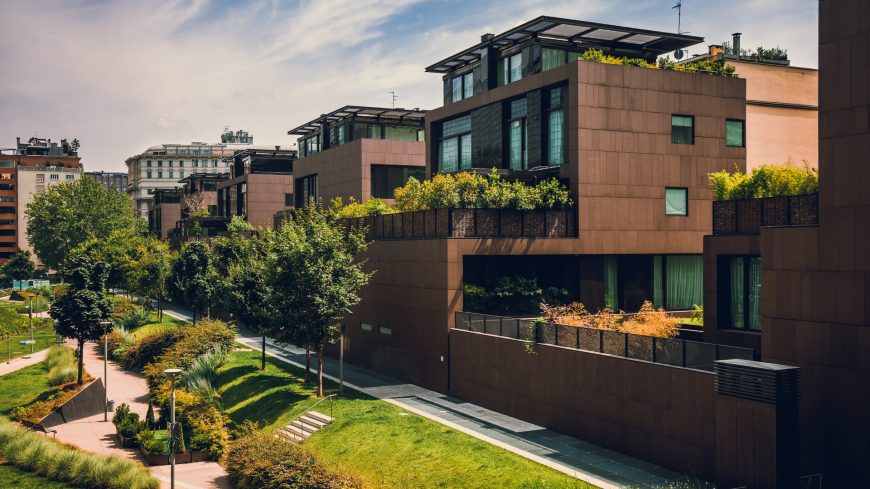
With the concern for environmental sustainability growing, many building managers are prioritising green products and processes for maintenance, such as choosing to use eco-friendly paints instead of traditional paints. And with many paint companies now offering sustainable paints and coatings, your organisation has the opportunity to not only reduce its environmental impact, but also earn a green star rating, save on energy costs, improve the wellbeing of your buildings’ occupants, and boost your reputation in the process - it’s a win-win situation!
So what should you know about eco-friendly paints before investing in them?
What makes a paint eco-friendly?
Paints that are not eco-friendly often include chemicals that can be harmful to the environment and contribute to poor air quality. Many non-eco-friendly paint options also have toxic properties that can lead to a range of health problems if not handled correctly, such as respiratory issues, headaches and skin and eye irritations - one of the many reasons it’s important to hire experienced painting contractors for your project.
Conversely, eco-friendly paints have fewer chemicals and more natural compounds in their ingredients, reducing or eliminating odours and making them safer for people, especially for those with allergies or respiratory conditions. They are also generally manufactured in environmentally friendly ways, which reduces their carbon footprint.
Eco-friendly paints are a smart option if you want to improve the air quality in your school, ensure you have a healthy painting solution for your hospital, or make your commercial property a 'green building' to be more attractive to tenants looking for a sustainable office site.
The benefits of eco-friendly paints are plenty. At a glance, they include:
- Being better for the environment and air quality
- Posing lesser risks to human health
- More environmentally friendly manufacturing techniques
- Increased paint coverage with fewer coats
- Less or zero odour
- Contributing to a positive reputation
Benefits of eco-friendly paints
1. Improve cost-effectiveness
Thanks to advances in technology, many eco-friendly paints are more efficient to use than regular paints as they provide better coverage, requiring less coats than the high chemical content alternatives.
Depending on the make and provider of paint, these eco-friendly products can cost roughly the same or slightly more than traditional paint coatings, but their improved coverage can contribute to a higher return on investment.
2. Better for the environment and people
Eco-friendly paints are also typically manufactured in a more environmentally friendly way, such as by using solar power or better wastewater management. Additionally, their manufacturing process transmits less fumes that have adverse effects on air quality and produces less toxic waste than non-eco-friendly paints.
The environmental benefits also extend to their application by reducing the impact on the air quality in your building. By producing less fumes when drying, eco-friendly paints can help you reduce the risk of health-related side effects like respiratory problems, as well as dizziness, headaches and nausea. As an added bonus, this normally means that the paint doesn’t have a strong odour either.
3. Improve your sustainable reputation
By choosing eco-friendly paints and operating in a sustainable way, you can also improve the reputation of your company and be on your way to earning a Green Star rating from the Green Building Council of Australia (GBCA). The rating shows that your building is meeting sustainability benchmarks and demonstrates your commitment to reducing your environmental impact - making your organisation or building more attractive to potential tenants, students or patients.
Types of eco-friendly paints
Paint aisles are now stacked with green products and non-toxic labels, however, it’s important to understand the difference between the types of eco-friendly paints in order to choose the best possible product for your project.
Water-based paints
With water as its foundation, this paint breaks down more easily compared to non-water-based products in the market. The majority of water-based paint ingredients are biodegradable and have a lower chemical and toxicity content. They pose significantly less threats to the environment and aren’t as harmful to air quality. You can literally breathe more easily with this product, which is better for both your contractors and the people in your building.
This type of paint product works really well for exterior walls that are often exposed to the elements.
Plant-based paints
Also commonly referred to as ‘natural paints’, these are non-toxic and created with natural compounds and minerals like plant extracts, beeswax, clay and resins. This means the paint will not emit a pungent odour and generally contributes to fewer adverse reactions on the environment and humans.
These paints are best for buildings where people with allergies or skin irritations may be present and can be used for interiors, timber architraves and skirting boards. Natural paints do spread differently to other chemical-based paints though, which is why contracting a professional painter that’s familiar with this product is crucial.
Low VOC Paints
VOC stands for Volatile organic compounds, which are chemical fumes released while paint is drying. These chemicals can cause harmful health side effects and can contribute to higher carbon emissions. The lower the VOC level, the better it is for the environment and for air quality.
One thing to note about low VOC paints is their rapid drying properties. The VOCs in regular paint help it stay wet so painters have a longer time to work with it. This means that application techniques for low VOC paints need to be slightly different to account for the faster drying time, so it’s a good idea to contract experienced painters who can ensure a high-quality finish is achieved.
This kind of paint is great for indoor or outdoor facades and walls, and is commonly used by many reputable commercial contractors.
Zero-VOC Paints
For paint to come under the ‘zero-VOC’ category, it must contain fewer than five grams of VOCs per litre. This can often be harder to come by in darker paint colours as the tinting component typically requires a higher level of VOCs than for lighter paint colours. It’s important to note that VOCs may be present in some colourants even if they’re not present in the base paint. Paints that provide comprehensive lists of ingredients are normally the ones that you can trust.
Like low VOC paints, zero VOC products do spread and dry at different rates, so a professional should apply them.
By using eco-friendly paints, you can rest assured that you’re doing the right thing by the environment and your people.
Your paintwork is an investment that needs protecting to ensure the ongoing appearance of your building and reduce future expenses. Learn how to keep your paintwork looking fresh for longer with our handy guide to painting maintenance.
Higgins Coatings is Australia's premier commercial painting contractor with over 70 years of experience in providing cost-effective painting and tailored maintenance solutions to a broad range of industries including hospitals, aged care, schools, and strata. If you need quality painting services delivered on time and within budget, contact us today for a consultation.

